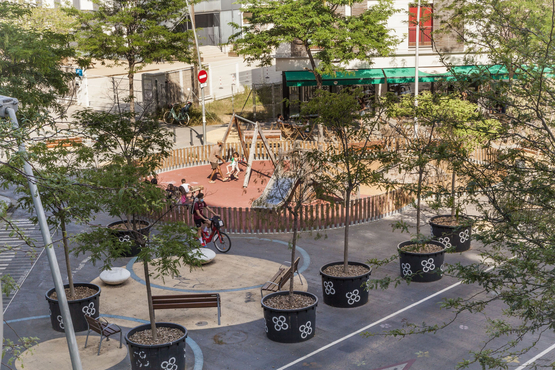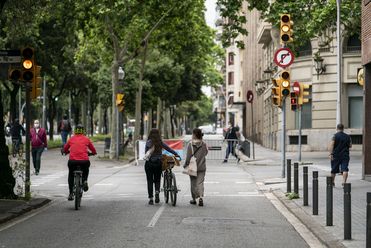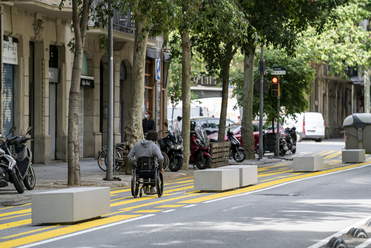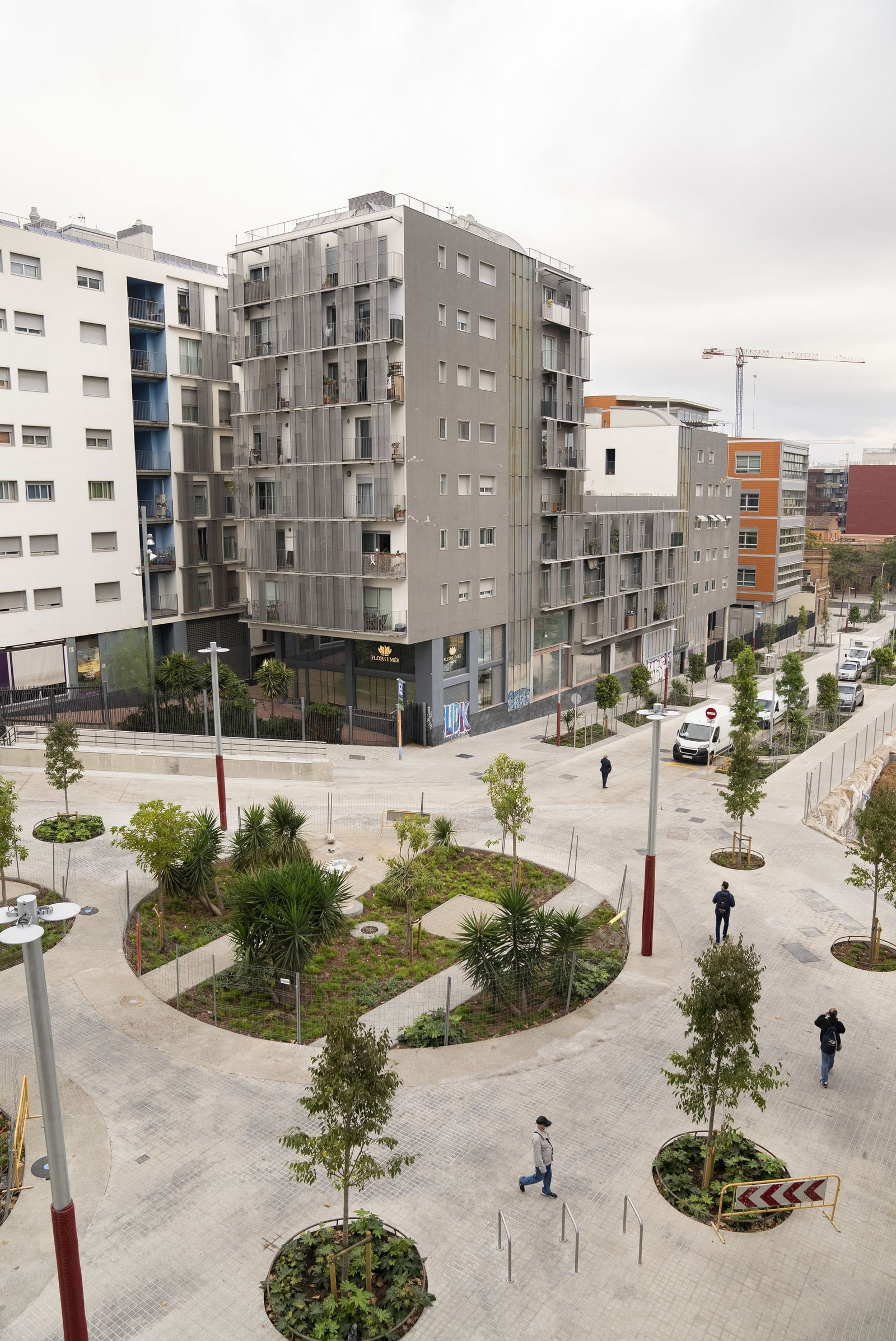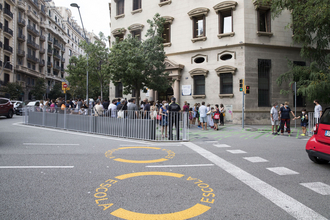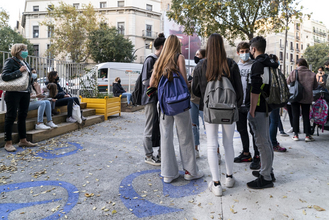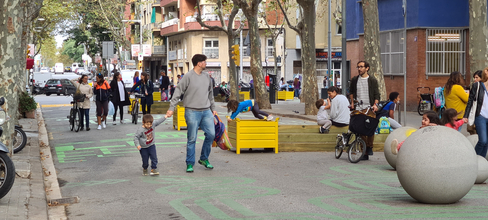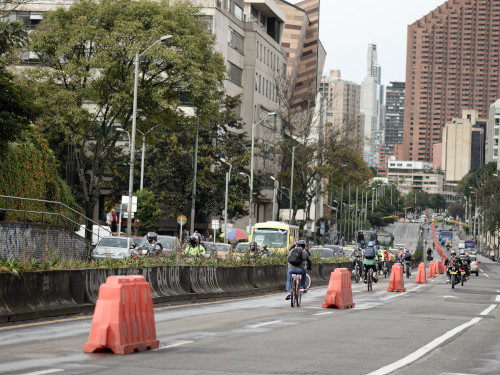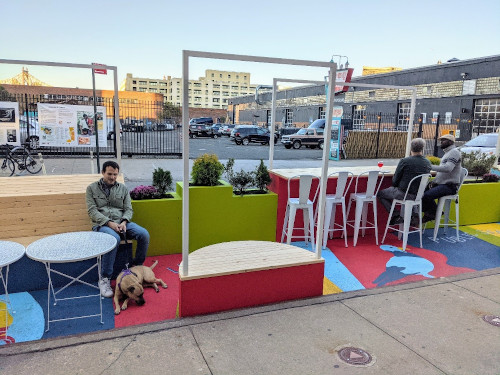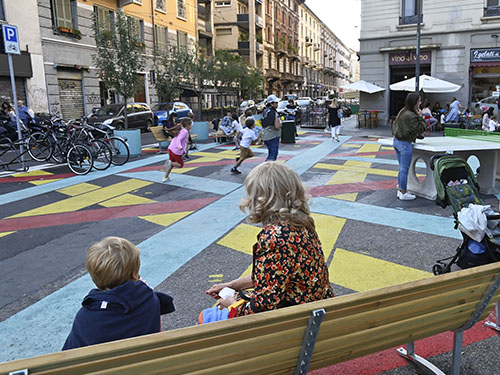The health crisis: Cyclists ahead of pedestrians
In response to the health crisis, the municipality of Barcelona carried out a number of actions to make travel safer and free up more space for active modes of transport and leisure. Building on previous experience, the tactical approach was used to implement emergency actions (actuacions emergència). Of these many actions, only changes affecting daily mobility have persisted after the crisis, such as bicycle lanes, sidewalk widening and roadway narrowing at intersections.
For cyclists, new cycle corridors (Corredors bici) were created throughout the city using street paint and plastic shock absorbers. Using materials similar to those that would be used for permanent cycle infrastructure, as soon as the corridors were installed, they were intended to last. Of the 25 kilometres completed (20 kilometres in 2020 and 5 in 2021), 100% are still operational today. It did not seem necessary to carry out any permanent improvements. The rollout of cycling amenities has thus accelerated in Barcelona and in some municipalities in the metropolitan area.
Towards a metropolitan bicycle network
In the Barcelona Metropolitan Area (Àrea Metropolitana de Barcelona, AMB), several municipalities wanted to strengthen the metropolitan cycle network during the crisis. The accelerated completion of 70 kilometres of bicycle infrastructure was announced in the metropolitan cycle plan for 2020, for this area of 3.2 million inhabitants (36 municipalities and area of 630 square kilometres). While the state of emergency made it possible to speed up public procurement procedures, many technical, financial and scheduling constraints slowed down the implementation of these developments within the AMB. By spring 2021, around 35 kilometres were completed, planned, or in construction, with the City of Barcelona in the lead.

